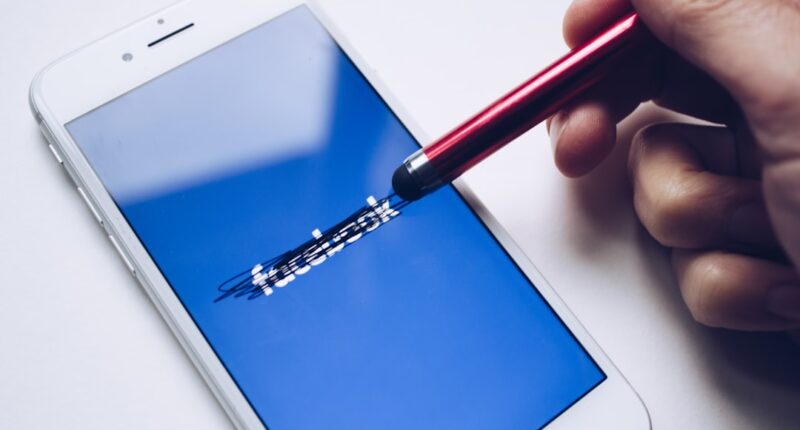To effectively connect with your audience, it is imperative to first understand who they are. This involves delving into demographics such as age, gender, location, and interests, as well as psychographics that reveal their values, beliefs, and lifestyle choices. By conducting thorough market research, you can gather insights that will inform your creative decisions and marketing strategies.
For instance, if your target audience consists primarily of millennials who are passionate about sustainability, you might consider incorporating eco-friendly themes into your work or promoting sustainable practices in your messaging. Understanding your audience not only helps in tailoring your content but also in predicting their reactions and preferences, allowing for a more personalized approach that resonates deeply. Moreover, understanding your target audience goes beyond mere statistics; it requires empathy and active engagement.
Engaging with your audience through surveys, polls, or direct conversations can provide invaluable feedback that shapes your artistic direction. This two-way communication fosters a sense of belonging and loyalty among your followers, as they feel heard and valued. Additionally, analyzing the behavior of your audience on various platforms can reveal patterns in their consumption habits, enabling you to optimize your content delivery.
By investing time in understanding the nuances of your audience’s preferences, you can create a more meaningful connection that not only enhances your brand but also enriches the overall experience for your fans.
Key Takeaways
- Understanding your target audience is crucial for creating content that resonates with them and drives engagement.
- Building a strong online presence involves having a professional website, active social media profiles, and consistent branding across all platforms.
- Utilizing social media platforms allows you to connect with your audience, share content, and build a community around your brand.
- Creating engaging visual content, such as videos, infographics, and high-quality images, can help capture and maintain your audience’s attention.
- Collaborating with influencers and other artists can help expand your reach and introduce your brand to new audiences.
Building a Strong Online Presence
In today’s digital age, establishing a robust online presence is crucial for any artist or creator looking to make an impact. This involves curating a cohesive brand identity across various platforms, ensuring that your visual aesthetics, tone of voice, and messaging align with your artistic vision. A well-defined online presence not only helps in attracting new followers but also reinforces the loyalty of existing fans.
This can be achieved through a professional website that showcases your portfolio, biography, and contact information, alongside active profiles on social media platforms where you can engage with your audience. Consistency is key; maintaining a regular posting schedule and adhering to a unified theme will help solidify your brand in the minds of your audience. Furthermore, building a strong online presence requires an understanding of search engine optimization (SEO) principles to enhance visibility.
By incorporating relevant keywords into your website content and social media posts, you can improve your chances of being discovered by potential fans searching for artists in your niche. Additionally, leveraging analytics tools can provide insights into which types of content resonate most with your audience, allowing you to refine your strategy over time. Engaging with other creators and participating in online communities can also amplify your reach, as collaboration often leads to cross-promotion and exposure to new audiences.
Ultimately, a strong online presence is not just about visibility; it’s about creating an authentic connection with your audience that encourages them to invest in your work.
Utilizing Social Media Platforms

Social media platforms have revolutionized the way artists connect with their audiences, offering unprecedented opportunities for engagement and promotion. Each platform has its unique characteristics and user demographics, making it essential to tailor your approach accordingly. For instance, Instagram is highly visual and ideal for showcasing artwork through images and stories, while Twitter allows for real-time conversations and updates.
By strategically selecting the platforms that align with your artistic style and target audience, you can maximize your reach and impact. Regularly posting content that reflects your creative process, behind-the-scenes glimpses, or personal anecdotes can humanize your brand and foster a deeper connection with followers. Moreover, social media is not just a broadcasting tool; it is a space for interaction and community building.
Engaging with followers through comments, direct messages, and live sessions can create a sense of intimacy that encourages loyalty. Hosting Q&A sessions or live art demonstrations can invite participation and spark conversations around your work. Additionally, utilizing features such as polls or questions in stories can provide valuable insights into what your audience enjoys or wants to see more of.
By actively participating in discussions and responding to feedback, you cultivate a vibrant online community that feels invested in your journey as an artist. This reciprocal relationship not only enhances visibility but also transforms followers into advocates who share your work within their networks.
Creating Engaging Visual Content
Visual content is the cornerstone of any artist’s marketing strategy; it is the primary medium through which you communicate your artistic vision. High-quality images and videos that showcase your work are essential for capturing attention in an increasingly crowded digital landscape. Investing in professional photography or learning basic editing skills can significantly enhance the presentation of your art.
Additionally, experimenting with different formats—such as time-lapse videos of your creative process or interactive posts—can keep your content fresh and engaging. The goal is to create visuals that not only highlight the beauty of your work but also tell a story that resonates with viewers on an emotional level. In addition to showcasing finished pieces, consider creating content that invites viewers into your creative world.
Behind-the-scenes glimpses of your studio setup, sketches in progress, or even candid moments during the creation process can foster a sense of authenticity that draws people in. Engaging visual content should also encourage interaction; ask questions or prompt discussions related to the themes of your work. Utilizing tools like infographics or animated graphics can further enhance engagement by presenting information in an easily digestible format.
Ultimately, the key to creating compelling visual content lies in balancing aesthetics with storytelling—crafting images that not only captivate but also connect with the hearts and minds of your audience.
Collaborating with Influencers and Other Artists
Collaboration is a powerful strategy for expanding your reach and enhancing your credibility as an artist. Partnering with influencers who align with your artistic vision can introduce you to new audiences who may be interested in your work. These influencers often have established trust with their followers, making their endorsement invaluable.
When selecting collaborators, it’s essential to choose individuals whose values resonate with yours; this ensures authenticity in the partnership and fosters genuine connections with both audiences. Whether it’s through joint projects, social media takeovers, or co-hosted events, collaborations can create buzz around your work while providing fresh perspectives that enrich your creative process. In addition to working with influencers, collaborating with fellow artists can lead to innovative projects that push creative boundaries.
Joint exhibitions or art installations allow for the blending of styles and ideas, resulting in unique experiences for audiences. Such collaborations not only enhance visibility but also foster a sense of community within the artistic landscape. Engaging in collaborative projects encourages networking opportunities that can lead to future partnerships or mentorships.
By embracing collaboration as a means of growth and exploration, you position yourself within a larger artistic dialogue that celebrates diversity and creativity while expanding your own horizons.
Leveraging Email Marketing

Email marketing remains one of the most effective tools for artists looking to maintain direct communication with their audience. Unlike social media platforms where algorithms dictate visibility, email allows you to reach subscribers directly in their inboxes—a space they have opted into receiving content from you. Building an email list should be a priority; offering incentives such as exclusive content, early access to new works, or special discounts can encourage sign-ups.
Crafting visually appealing newsletters that showcase recent projects, upcoming events, or personal reflections can keep subscribers engaged while reinforcing their connection to you as an artist. Moreover, email marketing provides an opportunity for storytelling that goes beyond what social media allows. You can share insights into your creative process, discuss the inspiration behind specific pieces, or reflect on experiences that have shaped your artistic journey.
This deeper level of engagement fosters intimacy and loyalty among subscribers who feel personally connected to you and your work. Additionally, segmenting your email list based on interests or demographics allows for more targeted messaging—ensuring that each subscriber receives content relevant to them. By leveraging email marketing effectively, you create a dedicated channel for nurturing relationships with fans while driving traffic to your website or social media platforms.
Engaging with Fans and Building a Community
Engagement is at the heart of building a thriving community around your art. It goes beyond simply sharing content; it involves actively listening to feedback and fostering conversations that invite participation from fans. Hosting events such as virtual meet-and-greets or art workshops can create opportunities for direct interaction where fans feel valued and appreciated.
These experiences not only deepen connections but also provide insights into what resonates most with your audience—information that can inform future projects or marketing strategies. Furthermore, creating spaces for fans to connect with one another enhances the sense of community surrounding your work. Consider establishing forums or social media groups where followers can share their interpretations of your art or discuss related topics.
Encouraging user-generated content—such as fan art or testimonials—can also amplify engagement while showcasing the diverse ways in which people connect with your work. By prioritizing engagement and community-building efforts, you cultivate an environment where fans feel empowered to share their passion for art while contributing to a collective narrative that celebrates creativity and connection. Ultimately, this sense of belonging not only enriches the experience for fans but also elevates your status as an artist within the broader cultural landscape.
FAQs
What are some proven strategies for marketing music effectively?
Some proven strategies for marketing music effectively include building a strong online presence, utilizing social media platforms, creating engaging visual content, collaborating with influencers and other artists, and leveraging email marketing.
How important is building an online presence for marketing music?
Building an online presence is crucial for marketing music effectively as it allows artists to reach a wider audience, connect with fans, and promote their music through various digital channels such as websites, social media, and streaming platforms.
Why is social media important for marketing music?
Social media is important for marketing music because it provides a direct and interactive way to engage with fans, share music and updates, and build a loyal fan base. Platforms like Instagram, Facebook, Twitter, and TikTok are popular for promoting music and connecting with audiences.
What role does visual content play in marketing music?
Visual content plays a significant role in marketing music as it helps to capture the attention of potential fans and create a memorable and engaging brand image. This includes creating music videos, promotional graphics, and visually appealing social media posts.
How can artists effectively collaborate with influencers and other artists for music marketing?
Artists can effectively collaborate with influencers and other artists for music marketing by leveraging their existing fan base, reaching new audiences, and creating engaging and authentic content together. This can include features on each other’s songs, joint social media campaigns, and live performances.
Why is email marketing a valuable strategy for promoting music?
Email marketing is a valuable strategy for promoting music as it allows artists to directly communicate with their fans, share exclusive content, promote upcoming releases and events, and build a loyal fan base. It is a powerful tool for maintaining a direct connection with fans.





